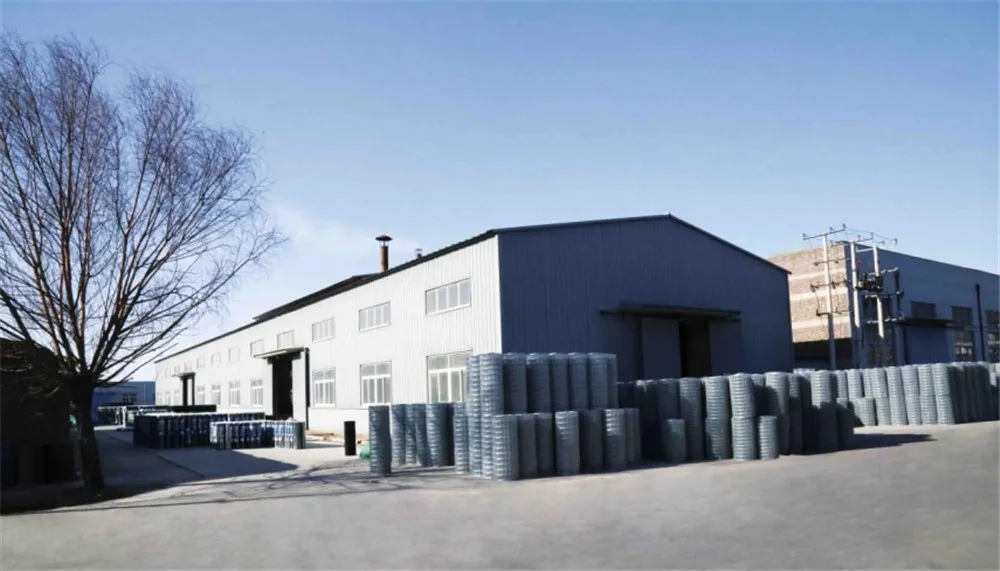
Nov . 16, 2024 17:05 Back to list
metal lath galvanized
Understanding Metal Lath The Versatility of Galvanized Options
Metal lath is a crucial material in the construction and renovation of buildings, playing a significant role in providing strength and stability to plastering systems and wall structures. Among the various types of metal lath, galvanized metal lath stands out due to its unique blend of durability, versatility, and resistance to corrosion. This article will delve into what galvanized metal lath is, its applications, advantages, and installation techniques.
What is Galvanized Metal Lath?
Galvanized metal lath is a form of thin steel that has been coated with zinc to prevent rusting and corrosion. The process of galvanization involves immersing the steel lath in molten zinc, which creates a protective barrier. This lath typically features a mesh pattern that allows for the effective adherence of plaster, stucco, or other finishes. The mesh structure provides not only a lightweight alternative to solid substrates but also a strong surface for subsequent layering.
Applications of Galvanized Metal Lath
Galvanized metal lath is widely used in various applications across the construction industry
1. Stucco Systems One of the most common uses of galvanized metal lath is in the application of stucco. The lath provides a solid framework for holding the stucco in place, ensuring a smooth and durable finish that can withstand harsh weather conditions.
2. Interior Walls In interior construction, galvanized metal lath serves as a support for plaster applications, offering a reliable base for traditional plastering methods. It enhances the overall structural integrity of walls, making them more resilient to cracking and damage.
3. Ceilings and Soffits Metal lath is also employed in ceiling applications, particularly in creating suspended ceilings or soffits. By utilizing galvanized lath, builders can achieve a smooth surface while minimizing weight on the structural components of the building.
4. Fire Protection Due to its non-combustible nature, galvanized metal lath is often used in fire-rated assemblies, providing additional protection for walls and ceilings in commercial and residential buildings.
Advantages of Using Galvanized Metal Lath
The choice to use galvanized metal lath in construction comes with several benefits that make it a preferred option for builders and contractors
metal lath galvanized

1. Corrosion Resistance The zinc coating on galvanized metal lath provides exceptional resistance to rust and corrosion, making it suitable for both indoor and outdoor applications. This durability extends the lifespan of the construction and reduces maintenance costs.
2. Strength and Stability The mesh design of galvanized metal lath offers superior strength while remaining lightweight. This combination allows for easier handling during installation while maintaining structural integrity under various conditions.
3. Versatility Galvanized metal lath can be used in numerous applications, from traditional plastering to modern construction techniques. Its adaptability makes it a favored choice for diverse projects across different building types.
4. Cost-Effectiveness Given its longevity and reduced maintenance requirements, galvanized metal lath proves to be a cost-effective option over time. Builders can save on repair and replacement costs, making it a smart investment.
Installation Techniques
Installing galvanized metal lath involves several steps to ensure proper adherence and functionality
1. Preparation Before installation, it’s important to prepare the surface where the lath will be applied. This may involve cleaning the area and ensuring it is flat and free of debris.
2. Cutting and Fitting The metal lath can be cut to size using metal shears, making it easier to fit into the desired space. It’s essential to be precise to avoid unnecessary waste and ensure a tight fit.
3. Attachment The lath is typically attached to the substrate using galvanized screws or nails, ensuring that it is secured firmly without any movement. Proper spacing and alignment are critical to achieving an even surface.
4. Applying the Finish After attachment, plaster or stucco is applied over the lath, allowing it to bond effectively with the mesh structure, thus ensuring stability and durability.
Conclusion
Galvanized metal lath is an integral component of modern construction, offering an array of advantages that contribute to its widespread use in various applications. Its corrosion resistance, strength, and versatility make it an essential choice for builders seeking reliability and cost-effectiveness. Understanding its properties and installation techniques can lead to enhanced project outcomes, demonstrating why galvanized metal lath has stood the test of time in the construction industry. Whether for residential or commercial projects, incorporating galvanized metal lath is sure to provide lasting benefits and superior performance.
-
Why a Chain Link Fence is the Right Choice
NewsJul.09,2025
-
Upgrade Your Fencing with High-Quality Coated Chicken Wire
NewsJul.09,2025
-
The Power of Fence Post Spikes
NewsJul.09,2025
-
The Best Pet Enclosures for Every Need
NewsJul.09,2025
-
Secure Your Property with Premium Barbed Wire Solutions
NewsJul.09,2025
-
Enhance Your Construction Projects with Quality Gabion Boxes
NewsJul.09,2025
Products categories











